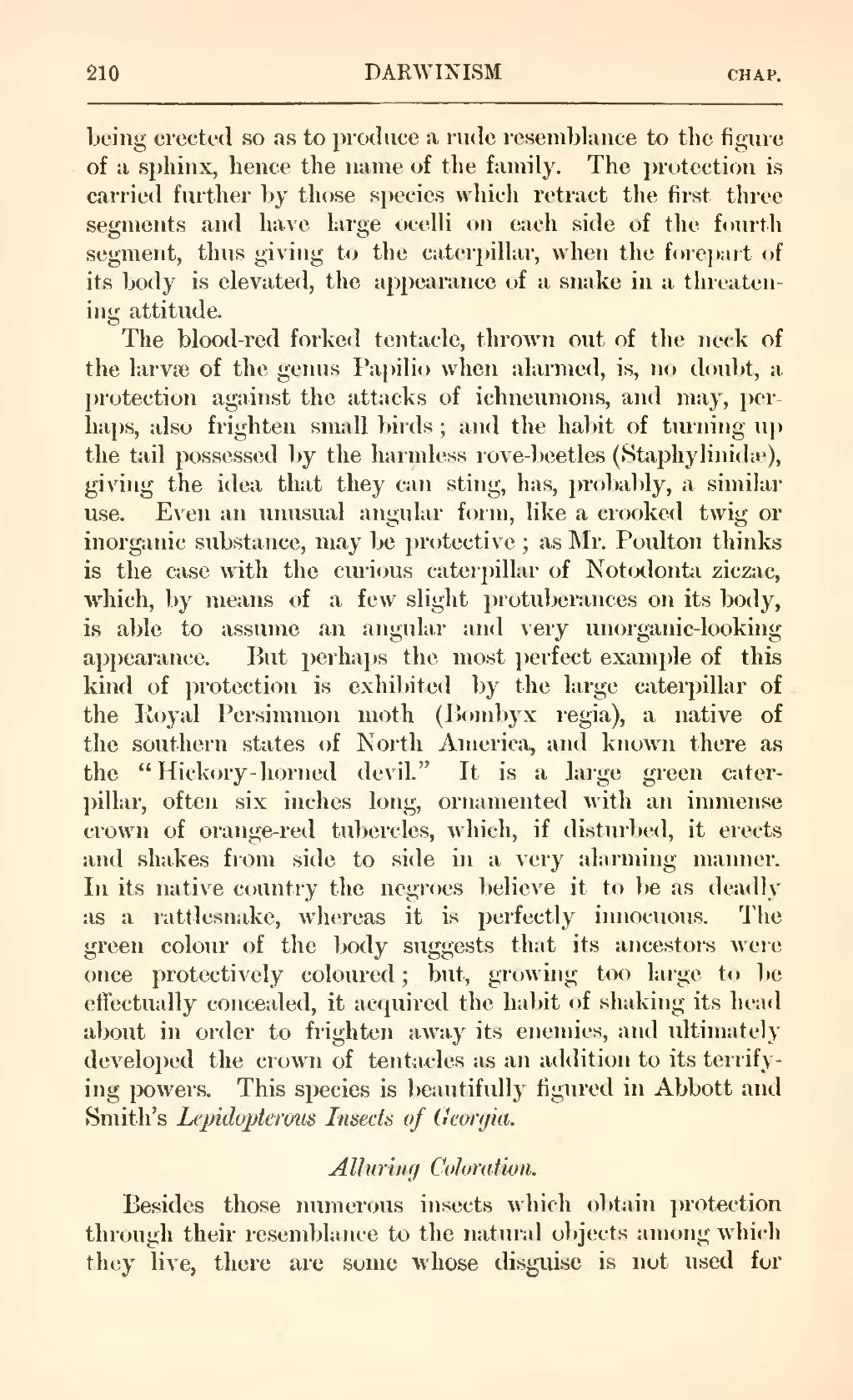being erected so as to produce a rude resemblance to the figure of a sphinx, hence the name of the family. The protection is carried further by those species which retract the first three segments and have large ocelli on each side of the fourth segment, thus giving to the caterpillar, when the forepart of its body is elevated, the appearance of a snake in a threatening attitude.
The blood-red forked tentacle, thrown out of the neck of the larvæ of the genus Papilio when alarmed, is, no doubt, a protection against the attacks of ichneumons, and may, perhaps, also frighten small birds; and the habit of turning up the tail possessed by the harmless rove-beetles (Staphylinidæ), giving the idea that they can sting, has, probably, a similar use. Even an unusual angular form, like a crooked twig or inorganic substance, may be protective; as Mr. Poulton thinks is the case with the curious caterpillar of Notodonta ziezae, which, by means of a few slight protuberances on its body, is able to assume an angular and very unorganic-looking appearance. But perhaps the most perfect example of this kind of protection is exhibited by the large caterpillar of the Royal Persimmon moth (Bombyx regia), a native of the southern states of North America, and known there as the "Hickory-horned devil." It is a large green caterpillar, often six inches long, ornamented with an immense crown of orange-red tubercles, which, if disturbed, it erects and shakes from side to side in a very alarming manner. In its native country the negroes believe it to be as deadly as a rattlesnake, whereas it is perfectly innocuous. The green colour of the body suggests that its ancestors were once protectively coloured; but, growing too large to be effectually concealed, it acquired the habit of shaking its head about in order to frighten away its enemies, and ultimately developed the crown of tentacles as an addition to its terrifying powers. This species is beautifully figured in Abbott and Smith's Lepidopterous Insects of Georgia.
Alluring Coloration.
Besides those numerous insects which obtain protection through their resemblance to the natural objects among which they live, there are some whose disguise is not used for
